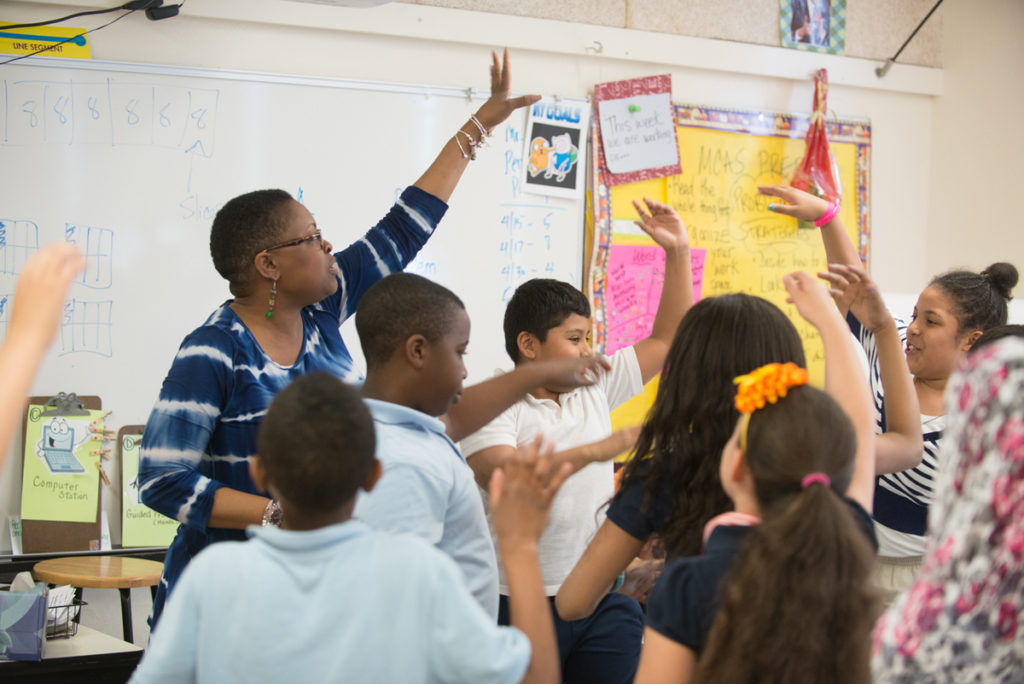
 While giving the January spelling assessment, I paused to look around the classroom and here’s what I saw: Sara was yawning. Ben held his head in his hands. Julie’s head was down on her paper, and Justin was tapping his pencil while jiggling his feet under his chair. It was not a picture of first graders doing their best to “show what they know” about all they’d learned in spelling. I knew I had to stop and do something to get them all back in the groove. Movement breaks to the rescue!
While giving the January spelling assessment, I paused to look around the classroom and here’s what I saw: Sara was yawning. Ben held his head in his hands. Julie’s head was down on her paper, and Justin was tapping his pencil while jiggling his feet under his chair. It was not a picture of first graders doing their best to “show what they know” about all they’d learned in spelling. I knew I had to stop and do something to get them all back in the groove. Movement breaks to the rescue!
“Pencils down,” I announced. “Everyone find an ‘Aka Baka Soda Cracker’ spot. Remember to show safe and careful jumping. We’ll play four rounds. Here we go . . .”
[In this activity, children chant, jump, and make predictions while practicing keeping a steady beat. You can find instructions for “Aka Baka Soda Cracker” in 80 Morning Meeting Ideas for Grades K–2.]
After some jumping, giggling, and a final silent round that allowed them to regain self-control, students returned to their seats. They picked up their pencils with renewed focus. Walking around, I saw that most of them were spelling most of their words accurately. Soon, they finished the assessment.
Movement breaks are brief intervals that enable all students to move their bodies and help teachers to engage learners in physical ways. Chants, poems, even Morning Meeting greetings and activities can be used as movement breaks throughout the day.
Like many other teachers, I’ve found that quick, frequent breaks not only enable students to stay focused on learning—they can even increase learning. By using movement breaks at the right time, I can help students maximize their attention and stay on task. That’s why I often lead a rousing game of “Double This Double That” during Writer’s Workshop or a quick round of “Head, Shoulders, Knees, and Toes” during assessments.
I’ve found that I also benefit from movement breaks. First, I see the fruits of my labor come to life. For example, a quick game of “Hot or Cold?” allows me to see how successfully my students have come together as a community. In this familiar game, students must work together to achieve one goal: guiding a seeker to find a hidden item. They call out “hot” if the seeker moves toward the item and “cold” if she moves away. Their cheers as they celebrate their collective success validate the time I spend creating a healthy classroom community.
Second, the game allows me to connect with my students on a different level, if only for a minute. We engage in a fun activity as a group. The dynamic of the classroom changes subtly; we smile at each other and share laughter and a silly moment together.
Finally, movement breaks release stress! With high-stakes assessments, new initiatives, and new evaluation systems in place, I know I am more patient, more understanding and more able to be “in the moment” when I get to release some built-up stress from my day.
Movement breaks benefit both you and your students. Using them at the right time helps increase student focus, decrease stress, and create opportunities for community building and fun. Plan to use movement breaks more often this week—and consider trying one during a time in the school day when you haven’t before. If you do, leave a comment to let me know how it goes! I’d love to hear from you.
Get tips for teaching and using energizers in Susan Roser’s book, Energizers! 88 Quick Movement Activities That Refresh and Refocus.
Candace Roberts is a Responsive Classroom consultant, kindergarten teacher in Rhode Island, and Early Childhood Generalist.